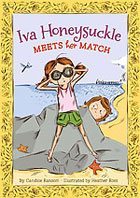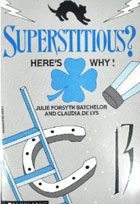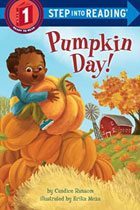 Every summer I wish I was ten again, the perfect age for the perfect season. At that age I was at the height of my childhood powers. And as a reader, books couldn’t be thrust into my hands fast enough.
Every summer I wish I was ten again, the perfect age for the perfect season. At that age I was at the height of my childhood powers. And as a reader, books couldn’t be thrust into my hands fast enough.
Every morning I’d eat a bowl of Rice Krispies, with my book at the table (my mother wouldn’t let me do this at supper, though I often kept my library book open on the seat of the next chair). Then I’d go out to my tree house to watch birds and read the day into being. Whatever I was reading — fiction or nonfiction — shaped my daily experiences. I longed to live in books.
At ten, I had mastered writing and drawing to the degree that I was comfortable moving back and forth between words and images. With pencil, paper, and crayons, I could slip into the world beyond the printed page. I “continued” the story in the book, or drew pictures, sometimes copying the illustrations. I loved the reckless, sketchy lines of Beth and Joe Krush’s drawings in The Borrowers. And I drew precise, tiny black cats, like the ones  Erik Blegvad often included in books he illustrated, like The Diamond in the Window, and Superstitious? Here’s Why?
Erik Blegvad often included in books he illustrated, like The Diamond in the Window, and Superstitious? Here’s Why?
Books led my ten-year-old self to places beyond my small Virginia landscape. In The Talking Tree, a novel about Pacific Northwest Native Americans, I was desperate to make my own totem pole. I glued three empty thread spools together and tried to etch a stylized raven, wolf, and beaver with the pointed end of a nail file that kept skidding off the smooth wooden surface.
My cousins got roped into acting out a Nancy Drew story. After reading The Mystery of the Leaning Chimney, I buried my mother’s Japanese sake cup, brought back by my uncle during WWII, in our back yard. When my cousins rolled up, I ran to meet their station wagon.
“Mama’s valuable foreign vase has been stolen!” I exclaimed, showing the boys the sinister-sounding note I’d written.
“Aw, you wrote that,” Eugene said, recognizing my handwriting.
 “No, really, it’s from the vase stealer!” I was shocked at his unwillingness to suspend disbelief, but undeterred. I dragged them all over the yard, digging holes until I “stumbled” on the buried cup.
“No, really, it’s from the vase stealer!” I was shocked at his unwillingness to suspend disbelief, but undeterred. I dragged them all over the yard, digging holes until I “stumbled” on the buried cup.
What made that summer special was the freedom to read. I read during the school year, of course, and even in class when I was supposed to be working on fractions, but pleasure reading time was squished to weekend afternoons and bedtime. Summer, however, was one Great Big Reading Fest.
Best of all, I wasn’t hobbled by a summer reading list. I grew up in an era in which teachers turned kids loose in June, glad not to clap eyes on them again until after Labor Day. Now many elementary schools ask students to read to prevent “Summer Slide.” The random lists I checked offer a wide variety of books in a range of reading levels. But the reading list noose tightens in middle and high schools. Students are often required to read from a more specific list and write a paper.
In her recent Washington Post piece, educator Michelle Rhee admits her own childhood dislike of summer reading lists that included such titles as Anne of Green Gables and other books she trudged through with little interest. As a teacher, and later as chancellor of D.C. Public Schools, she recognized the value of summer reading programs. But she also believes students should choose their own books.
A few weeks ago, I wandered the nonfiction children’s section in our public library. A boy around ten sat cross-legged on the floor, a book on helicopters open in his lap. I guessed he had pulled the book from the shelf and plunked right down to read it.
“Mom!” he said. “You have to see this! It’s the most amazing thing in the world!”
Yes, I agreed silently. It is the most amazing thing in the world to watch a child just the right age fall into a book of his choice. I hoped he would keep that glorious part of his self always. Let books continue to guide him, pull him in, shape his day.

Summer reading, at age 10, WAS the best, Candice! I always looked forward to the summer reading program at our public library, and keeping track of all the books I read on my summer reaching chart (excited for each stamp or star I got on my chart for every book I read). Peanuts collection by Charles Shulz, stories of magic by E. Nesbit, C. S. Lewis, and Edgar Eager, and any sort of craft book were what filled my summer days and evenings of reading. Thanks for the reminder of that wonderful time.